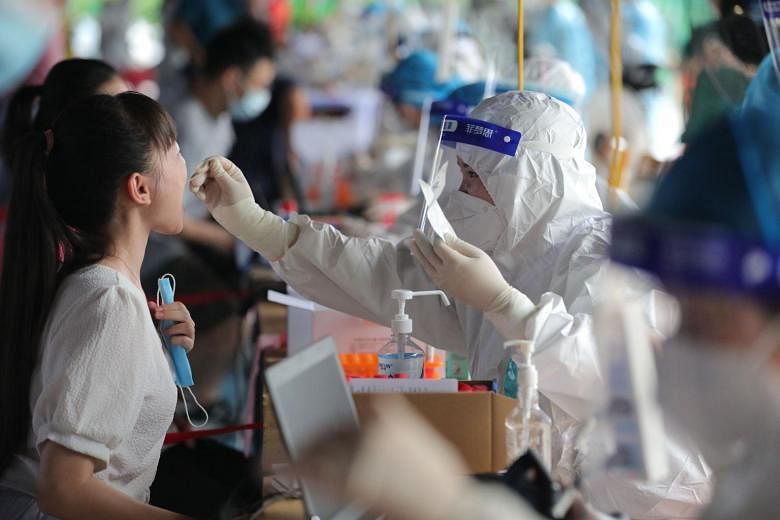SINGAPORE (THE BUSINESS TIMES) - Economic activity in Asean+3 is now projected to expand by an aggregate 6.1 per cent in 2021, down from the 6.7 per cent forecast earlier this year, after posting flat growth in 2020, according to the Asean+3 Macroeconomic Research Office (Amro) on Thursday (Oct 7).
The Plus-3 economies are continuing to drive regional recovery, especially China, which has fully vaccinated two-thirds of its population against Covid-19, benefiting from effective containment measures that have allowed the domestic economy to open up quite fully, noted the report.
Growth for the Asean sub-region, however, is forecast to be much slower at 2.7 per cent, due to recurring new waves of Covid-19 infections and the retightening of containment measures.
Looking ahead to next year, Amro analysts expect Asean+3 as a whole to grow strongly by 5 per cent. Inflation is projected to rise to 2.9 per cent in 2022, from 2.4 per cent this year.
For the Asean sub-region, they expect gross domestic product (GDP) to grow by 5.8 per cent. Inflation is projected to rise to 3.5 per cent in 2022, from 3 per cent this year.
"This pandemic has been very uneven... in terms of impact and recovery," noted Amro chief economist Khor Hoe Ee in Thursday's briefing.
The impact the pandemic has had on economies has been dependent on the structure of the economy, for example, how reliant the country is on the services sector such as tourism, as well as the amount of government support received.
Going forward, vaccinations will play a big role in terms of how rapidly economies recover, he added.
"By and large, what we're seeing is that the Plus-3 economies have done well, especially China, in terms of containing the pandemic and we expect the Plus-3 economies to grow quite fast compared with Asean countries which were hit quite badly by this last wave of the pandemic," said Dr Khor.
"But even among the Asean countries, because of the diverse nature of the economy, they've been hit differently. So not surprising, when they recover, the speed of recovery will also vary across the region.
"The most important thing going forward is that most countries have ramped up their vaccinations and we feel comfortable that by early next year, most of them will be able to achieve a certain immunity level and be able to open up more fully. And because of that, the economy will be able to bounce back quite well," he said.
Meanwhile, any withdrawal of policy support needs to tread the fine line between preserving the remaining policy space and supporting the rebound.
"Policy support cannot go on forever, which is why governments need to manage the infection and ensure that the economic recovery becomes entrenched. Otherwise, we're going to see prolonged weak economic activity that will spill over to businesses and households, and eventually to the financial system," said Dr Ong Li Lian, group head and lead specialist at Amro.
New complications that have come online in the past six months include the potential for a sudden and sharper-than-expected tightening of United States monetary conditions, she noted. This could increase volatility in the region and raise domestic interest rates at a time when financial conditions should be kept as accommodating as possible.
"Last but not least, sovereign debt levels have been rising not just in the region, but elsewhere in the world to support these pandemic policies. At some point, if this is not reversed or halted, debt sustainability could become a concern," added Dr Ong.

